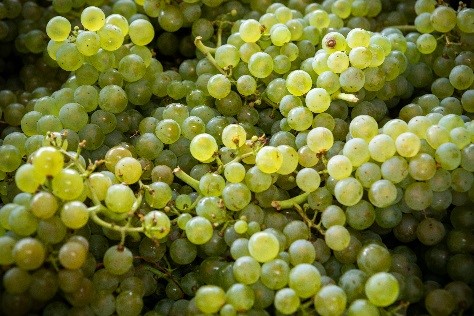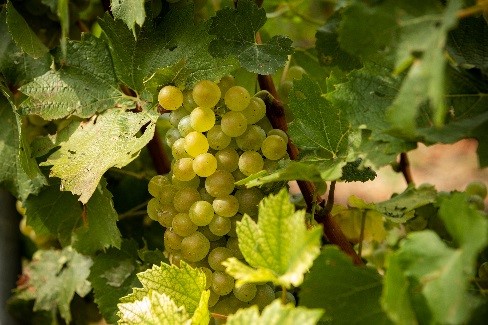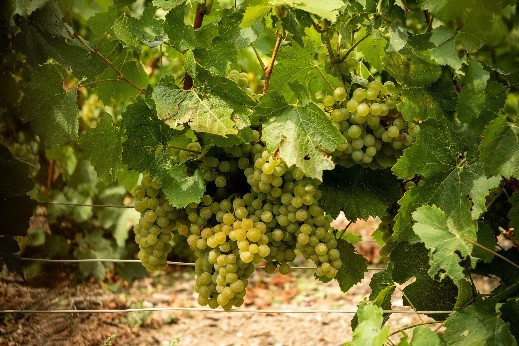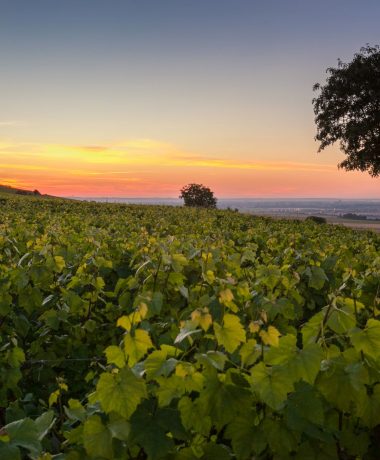(sólo en inglés)
The Montgueux vineyard is considered as the ultimate champagne from Troyes!
The little picturesque village of Montgueux is perched on the green hill near Troyes. Its 215-hectare vineyard welcome 40 winegrowers making a high quality Chardonnay. Its specific style is given by the very chalky soil of the area…
The specificities of the Montgueux vineyard
A vineyard island culminating in the middle of plains
The Montgueux vineyard is rather unknown in Champagne. However, it is located only about ten kilometers away from Troyes, the historical capital of Champagne. It is part of what is known as the « Côte de Champagne », and offers a breathtaking view from its 270 meters high. To the east, you can easily see the city of Troyes, which seems to be within easy reach from the top… To the south-west, you can see the nearby county of Othe.
Thanks to its height and its south/south-east exposure, the vineyard benefits from optimal sunshine all year round. This enables the grapes to accumulate as much sunshine as possible as soon as the sunny days start.
On the 11 km² land of Montgueux, there are 215 hectares of vines. 40 winegrowers cultivate them, and among them 24 are winemakers who sell their own champagne on their properties. Some winemaker families have settled down in Montgueux for several generations.
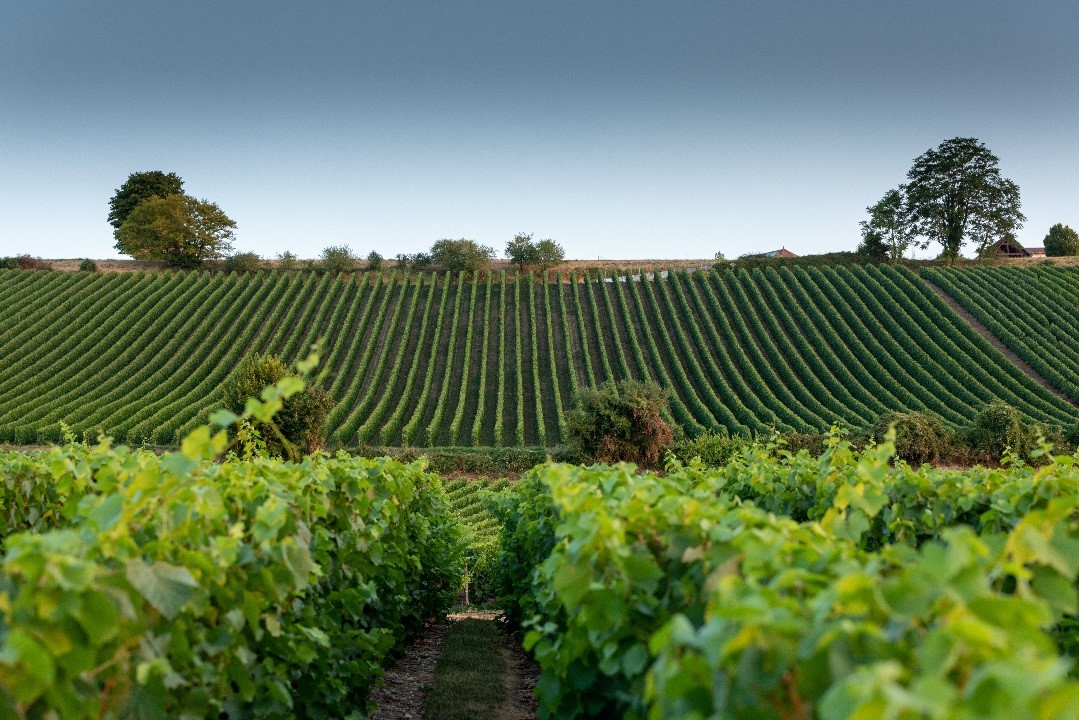
Without some beautiful spots like Montgueux, there would be something missing to the physiognomy of the Champagne region.» Jean Cottereau, Champagne, the secret geography.
A chalky soil with exceptional properties
Montgueux is located in the chalky part of the Aube department. Its basements are made of 90 million years old chalk! Clay and flint pockets can also be found. The type of chalk there is the cold chalk of the Turonian, going as deep as 150 meters thick. This is a proof of the tropical past of this region where, back then, there were millions of Coccolith algae with limestone skeleton that sedimented.
This type of soil enables a constant natural irrigation, and the formation of water reserves deeper underground. Chalk being porous by nature, it prevents from the excess of water, but it also rehydrates the soil in dry weather through small vessels. The clay pockets, partially present in these basements, enables the vines to take root and draw their resources. This gives the Chardonnay its specific style and its wide range of aromas.
A coveted Montgueuillat Chardonnay
This exceptional grape variety brings delicious flavours to a mature and elegant champagne wine, which does attract some jealousy from the great Champagne houses.
As explained in the above paragraph, the soil is what make the Chardonnay so typical. It represents 90% of the grape varieties, as the other 10% are Pinot noir and Pinot Meunier, used for the blends.
When tasting the champagne, the Montgueuillat Chardonnay offers a unique round flavour and a very wide range of aromas. Some notes of citrus fruits can be noticed, as well as of acacia honey, white fruits, brioche, flowers and sometimes even of butter and almond.
If there is a Montrachet in Champagne, we will find it in Montgueux. » Daniel Thibault, Charles Heidsieck’s cellar master, in the 1990’s.
The short and very old history of the Montgueux vineyard
From the Antiquity to the Middle Ages
Vine is one of the oldest crops cultivated in the Aube department. The development of the vines started in the Gallo-Roman period. The vineyard was not as developed as it is today, but it provided a livelihood for the population.
The vine cultivation was perpetuated through the Middle Ages. This is confirmed by archives that have been found, mentioning the existence of vines in 1161. At that time, a still wine was made, called « Coteaux Champenois ». Today, some winemakers of the Champagne region fight so people do not forget this wine, so specific to our region.
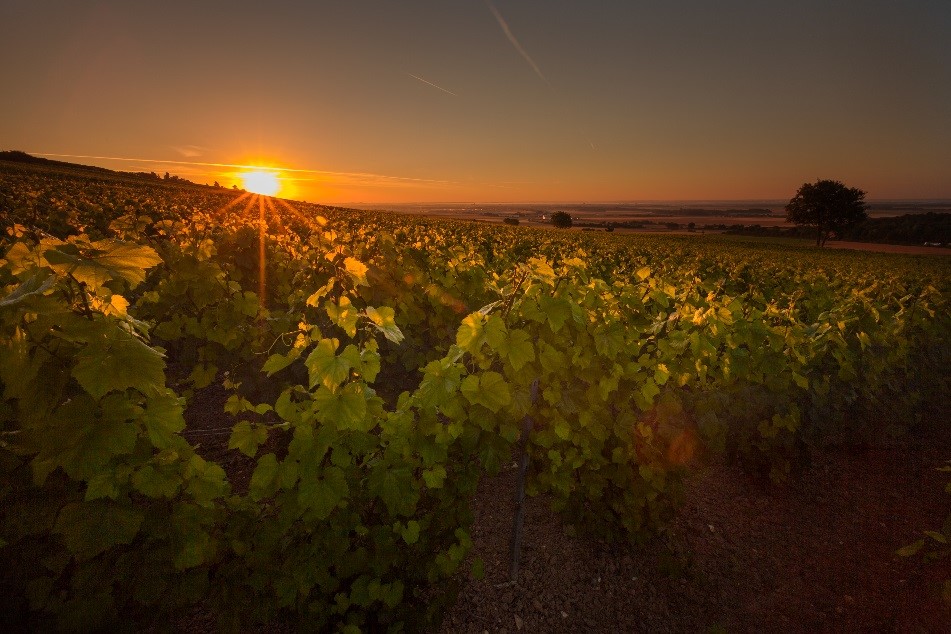
The Champagne Appellation, a real turning point
In the end of the 19th century, a crisis affected all the vineyards in France: the phylloxera crisis. This little aphid devastated all the vines and destroyed a very large part of the French vineyard.
After this crisis, the wine demand largely exceeded the offer. This phenomenon led to an important increase in the price of the wine. Champagne producers, already weakened by the crisis, also had to face more and more frauds. Situation then became critical.
It is only in 1927 that the Ministry of Agriculture created the first Appellation of Controlled Origin (AOC): Champagne. This appellation protects the winemakers production and limits for good the authorized areas to produce this sparkling wine. The winegrower Léon Beaugrand de Montgueux was one of the defenders of the Champagne AOC.
In the 1950’s, there was a boom in the vine growing field in France, which led to a higher demand from the Champagne merchants. This encouraged the farmers to buy lands to cultivate the vine. This is when many producers settled in Montgueux.
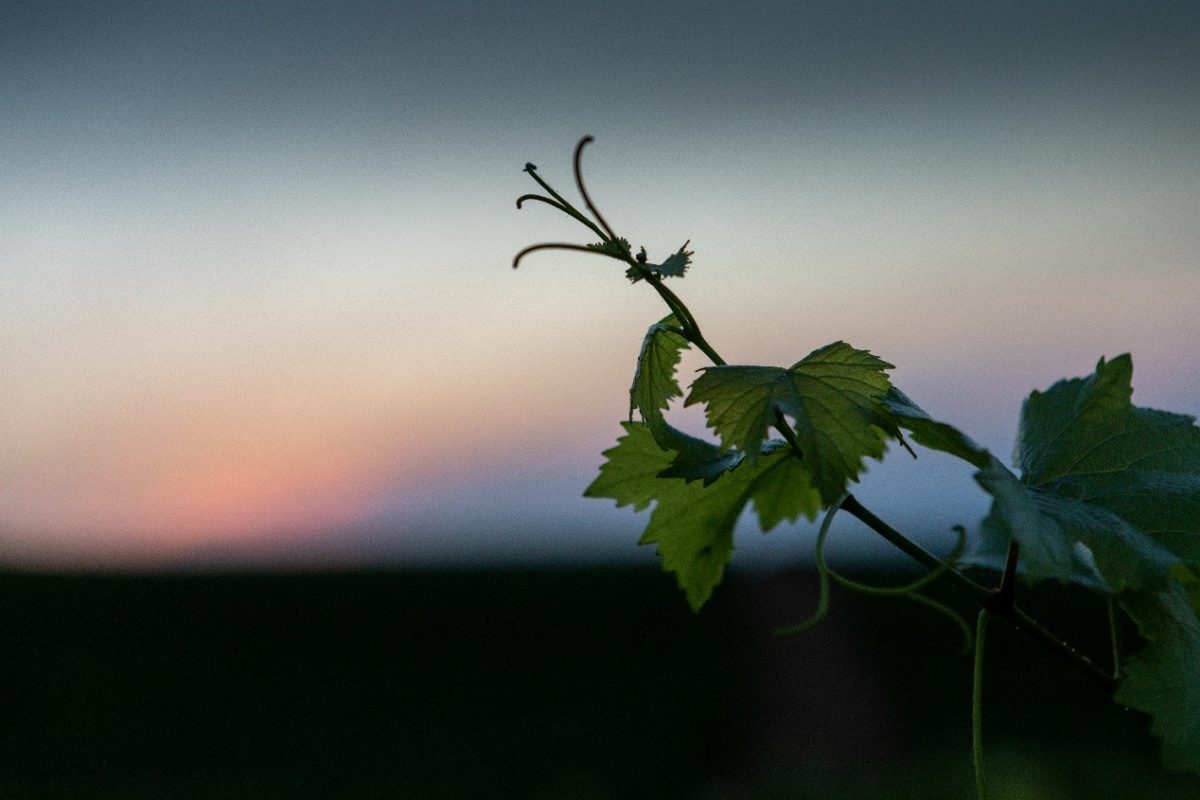
Anecdote: the Chardonnay vines have made a long trip. In 1878, two Japanese visitors (Takano and Tschiya) were doing an apprenticeship in the Montgueux vineyard. They got some Chardonnay plans offered, that they planted at the foot of Mount Fuji, in the Yamanashi province. Today, these vine shoots are at the origin of the main Japanese vineyard!
Winegrowers concerned about their environment
Grassing as a working method
Grassing is an appropriate method of working the soil for the vine cultivation. It consists in planting a grass cover between the rows of vine. It is also possible to let the already naturally present grass grow in the soil. Grassing is used in order to preserve the environment and the vine biodiversity. It enables to considerably reduce or even eliminate the use of herbicides and insecticides.
This working method appeared in the 1980’s. At this time, people became aware of soil pollution and biodiversity destruction caused by chemical treatments. Researches to find less agressive methods were launched between the 1980’s and the 2000’s. One method then stood out: grassing. It is mainly developed on the Champagne vineyards, and almost exclusively on the Montgueux vineyards.
Pros and cons
This technique has many advantages for the vine and for the winegrower who practices it. Grassing creates an important source of organic matter and encourages the activity and life of the soil’s biodiversity. It has a structuring role: it protects the plots from the runoff of water and erosion, which limits the transfer of pesticides. The soil being less polluted, the grapes growing on the vines can only be better.
However, it is important to know that grassing can have a few disadvantages. Growing grass between the vine rows is a new competitor for the vines. Therefore, it is essential to limit and choose the right variety to use for the grassing of the soil, depending on each plot of land. A soil analysis is necessary before all in order to have the best possible productivity.

If you are looking for discovery and tradition, the Montgueux vineyard is for you! This village will seduce you with its beauty and difference. Do not hesitate to visit one of the many winemakers for a champagne tasting. This sparkling and delicious beverage made out of exceptional quality Chardonnay grapes will delight your senses…

